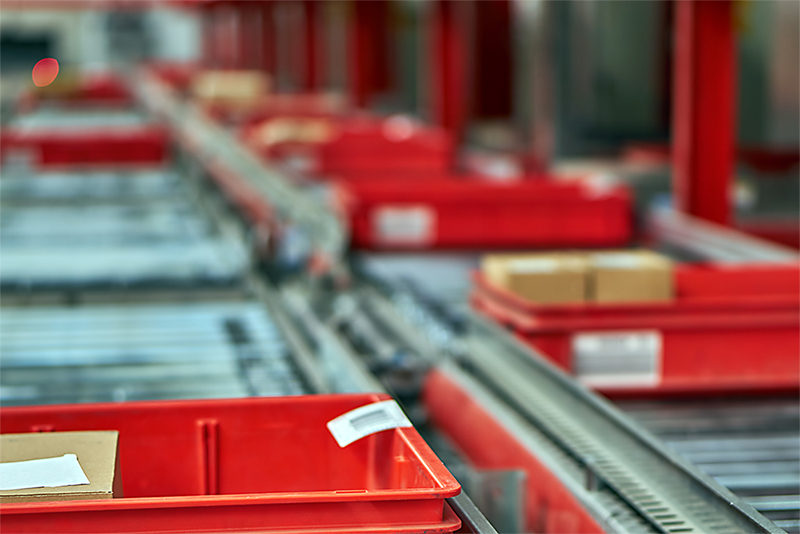
Robots are increasingly characterized as a panacea for numerous challenges in retail warehouses, but where does the hype end and reality begin?
Next-day delivery, made omnipresent by leaders like Amazon, has grown to include same-day delivery in many markets. The U.S. Department of Commerce’s latest survey estimates that e-commerce accounted for 14.5% of all retail sales in the fourth quarter of 2021, and that online purchases were $870.8 billion for the year, a 14.2% increase over 2020.
The pandemic revealed how important automation is in today’s retail distribution centers. Advanced warehouse automation enables retailers to effectively respond to increased demand, while addressing the shortage of labor in many markets. As a result of the so-called Great Resignation, many retailers continue to struggle to fill positions in their warehouses and DCs.
It's no surprise, therefore, that there’s been a growing interest among the retail industry in robotics. For DC managers, the notion of deploying a team of robots to supplement overextended employees is highly attractive, especially when they’re being asked to process an ever-increasing volume of orders in an exceptionally tight labor market.
The use of robots in retail warehouses is hardly new. Many high-volume DCs already use palletizing robots. The very thing that made palletizing a difficult activity for people — lifting heavy cases repeatedly with the same motion — has made it ideal for robots.
Today, robots are poised to take on more complex tasks, thanks to advances such as the latest vision systems and machine-learning applications. The impact on warehouses will be significant.
Automated systems are now in regular use by the most successful retail brands. Yet there’s a clear business case for the next wave of robotics: Item handling, picking, sortation and decanting make up more than 70% of activities in the typical retail warehouse. Automating these tasks will reduce the dependency on manual labor significantly.
Compared to palletizing, item picking requires more advanced robotics technology. A retailer might have 100,000 distinct SKUs, all of different weights, sizes and shapes, that change over time. These items arrive at the workstation in random orientations. This high variability presents robotics engineers with a far more difficult challenge than palletizing, but the development of artificial intelligence-based vision technology is a breakthrough. Robots are now able to pick selected items quickly and reliably.
The market demand is there. Robots have already proved themselves in many industrial applications, and will be used for increasingly complex warehouse tasks going forward.
While it’s tempting to view robots through a Hollywood lens, in which they complete numerous jobs with ease, the reality is different. Not all items can be handled by a robot; some are too large, too heavy or can’t be effectively manipulated by a gripper. Sending these items to a robot station causes interruptions and interventions that slow warehouse processes.
Robots are also not as efficient as humans in tasks like packing, where advanced Tetris skills are needed. While there’s no question that advances being refined today will ultimately lead to their use in those applications, today’s robots are roughly 50% as efficient as people when it comes to such complex tasks.
Like all investments in technology, robots don’t deliver a return on investment when they aren’t working. It’s therefore important that automated systems distinguish which items can effectively be picked by robots, and only feed the work they can execute successfully.
Ultimately, the ratio of robots to people in most warehouses will depend to a great degree on the percentage of items and orders that the robot can effectively handle. Over time, advances and refinements will enable robots to pick a larger percentage of the total product assortment. Ideally, systems being designed today will also include plans and the flexibility to replace more manual workstations with robots in the future.
Without question, today’s robots already reduce facilities’ dependency on manual labor, and will continue to offset additional demands for people to perform highly repetitive and manual tasks in the future. Ultimately, we’ll see the full potential of robots when the additional integration complexity they require today is fully addressed in large-scale material-handling systems.
Supply chain executives and DC directors have good reason to be excited by the robotics technology of today. Robots, like all forms of automation, are designed to augment the efforts of people. The first step in their deployment should be to simplify warehouse processes to a level that enables robots to successfully execute them.
Over time, robots — like the many other forms of automation we increasingly take for granted — will enable retail DCs to become faster and even more effective. What’s important now is that we implement reliable robot workflows, learn from them, and increase their applicability over time.
Marnix Rutten is the vice president, sales and systems warehouse solutions at Vanderlande.







